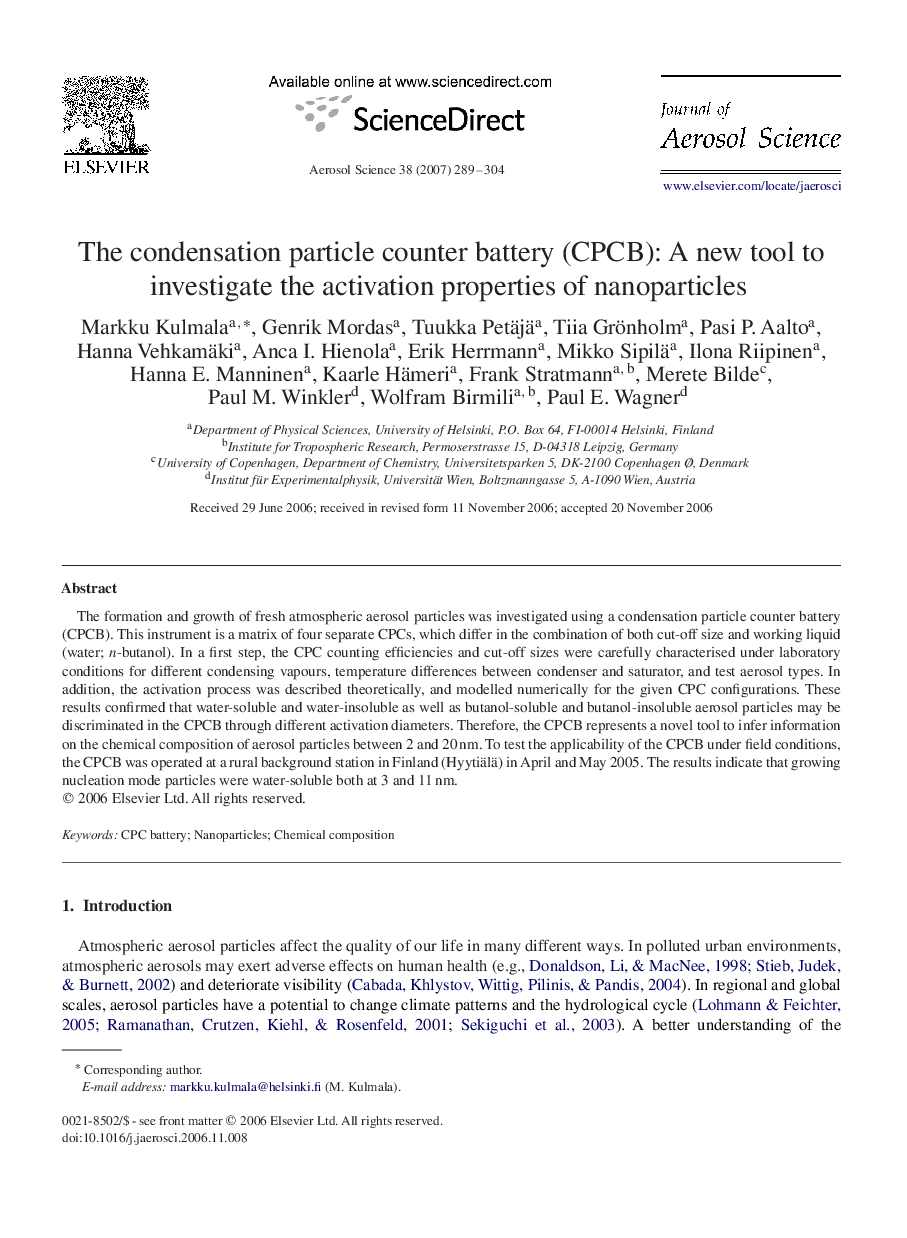| Article ID | Journal | Published Year | Pages | File Type |
|---|---|---|---|---|
| 4453224 | Journal of Aerosol Science | 2007 | 16 Pages |
The formation and growth of fresh atmospheric aerosol particles was investigated using a condensation particle counter battery (CPCB). This instrument is a matrix of four separate CPCs, which differ in the combination of both cut-off size and working liquid (water; n-butanol). In a first step, the CPC counting efficiencies and cut-off sizes were carefully characterised under laboratory conditions for different condensing vapours, temperature differences between condenser and saturator, and test aerosol types. In addition, the activation process was described theoretically, and modelled numerically for the given CPC configurations. These results confirmed that water-soluble and water-insoluble as well as butanol-soluble and butanol-insoluble aerosol particles may be discriminated in the CPCB through different activation diameters. Therefore, the CPCB represents a novel tool to infer information on the chemical composition of aerosol particles between 2 and 20 nm. To test the applicability of the CPCB under field conditions, the CPCB was operated at a rural background station in Finland (Hyytiälä) in April and May 2005. The results indicate that growing nucleation mode particles were water-soluble both at 3 and 11 nm.
